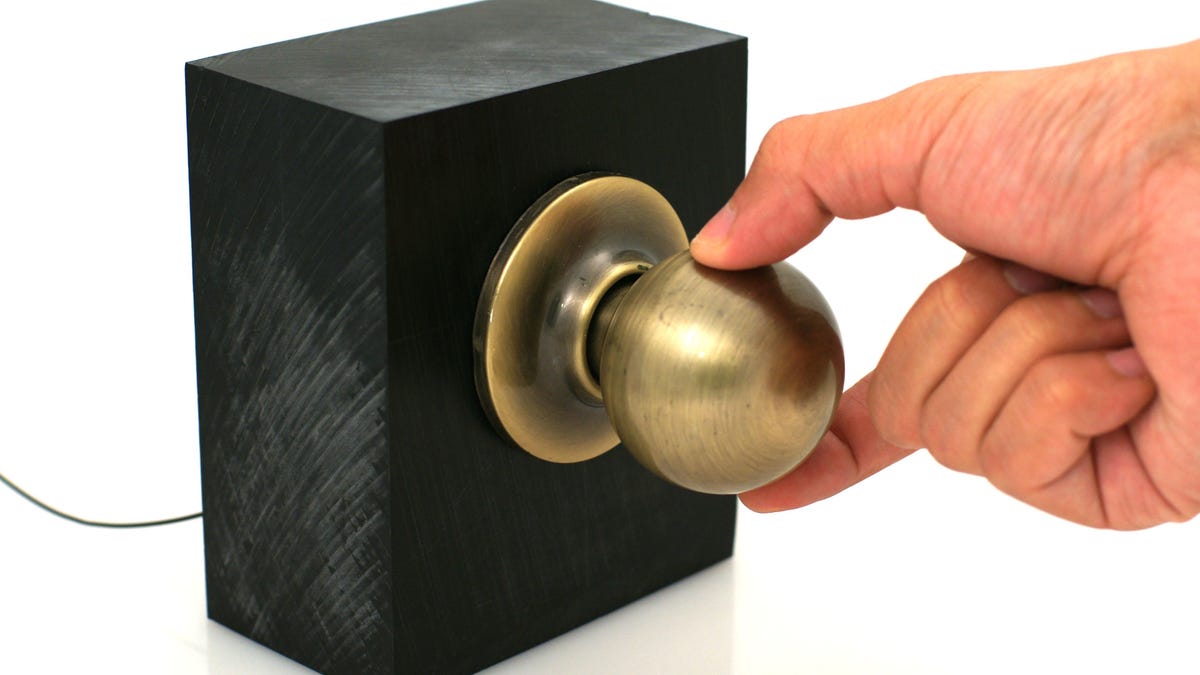Tablet-like touch interface comes to everyday objects
Researchers at Disney and Carnegie Mellon develop Touche, an interface system where multiple gestures can be added to existing touch screens and other objects, including "smart doorknobs."

Researchers have developed a way to take the multitouch interface of tablets and smartphones to a whole new level and set of objects.
Disney Research in Pittsburgh and Carnegie Mellon University yesterday announced a touch interface technology called Touche that brings a new set of gestures to existing touch screens and can make anything from table tops to body parts computer input devices.
It could lead to a "smart doorknob" that unlocks when grasped a certain way, or a couch that turns on the TV when a person sits down and turns off when the person falls asleep. The technology will also allow people to add new inputs to smartphones by pinching the front and back of the device.
Touche can also make the body an input device, allowing people to hold their fingers up to their lips to turn music off on their digital-music players. "It is not inconceivable that mobile devices will have no screens or buttons and rely on the body for the input surface," one of the researchers said in an explanatory video.
Existing capacitive touch screens operate by the changes a person's finger makes on the patterns of electric charge on a screen. The device translates motions into user inputs, such as clicking a hyperlink or typing, and has a transparent conductor layer under the glass to relay the electrical signals as data.
Typical capacitive touch screens generally operate as a binary system -- either the user is touching the screen or not. The Disney-Carnegie Mellon research, by contrast, developed a system to sample the return voltage from the user's touch many times, resulting in a range of frequency values.
That technique, called Swept Frequency Capacitive Sensing (SFCS), allows the system to capture more information and operate with different types of gestures beyond just touching or not touching. So in addition to touching an object with a finger tip, a user could send different commands by pinching or grasping.
"In our laboratory experiments, we were able to enhance a broad variety of objects with high-fidelity touch sensitivity. When combined with gesture recognition techniques, Touche demonstrated recognition rates approaching 100 percent. That suggests it could immediately be used to create new and exciting ways for people to interact with objects and the world at large," Ivan Poupyrev, senior research scientist at Disney Research, Pittsburgh, said in a statement.
The researchers conducted experiments where an existing touch screen was enhanced with the equivalent of aright mouse click and copy/paste commands based on pinching a smartphone's screen and back.
The smart doorknob proof of concept lets a person touch the door knob in one way to display a "be right back sign" on their office door, while another will lock the door.
A table, too, could become sensitive to different gestures. "This might enable us to one day do away with keyboards, mice, and perhaps even conventional touch screens for many applications," said research team member Chris Harrison.

